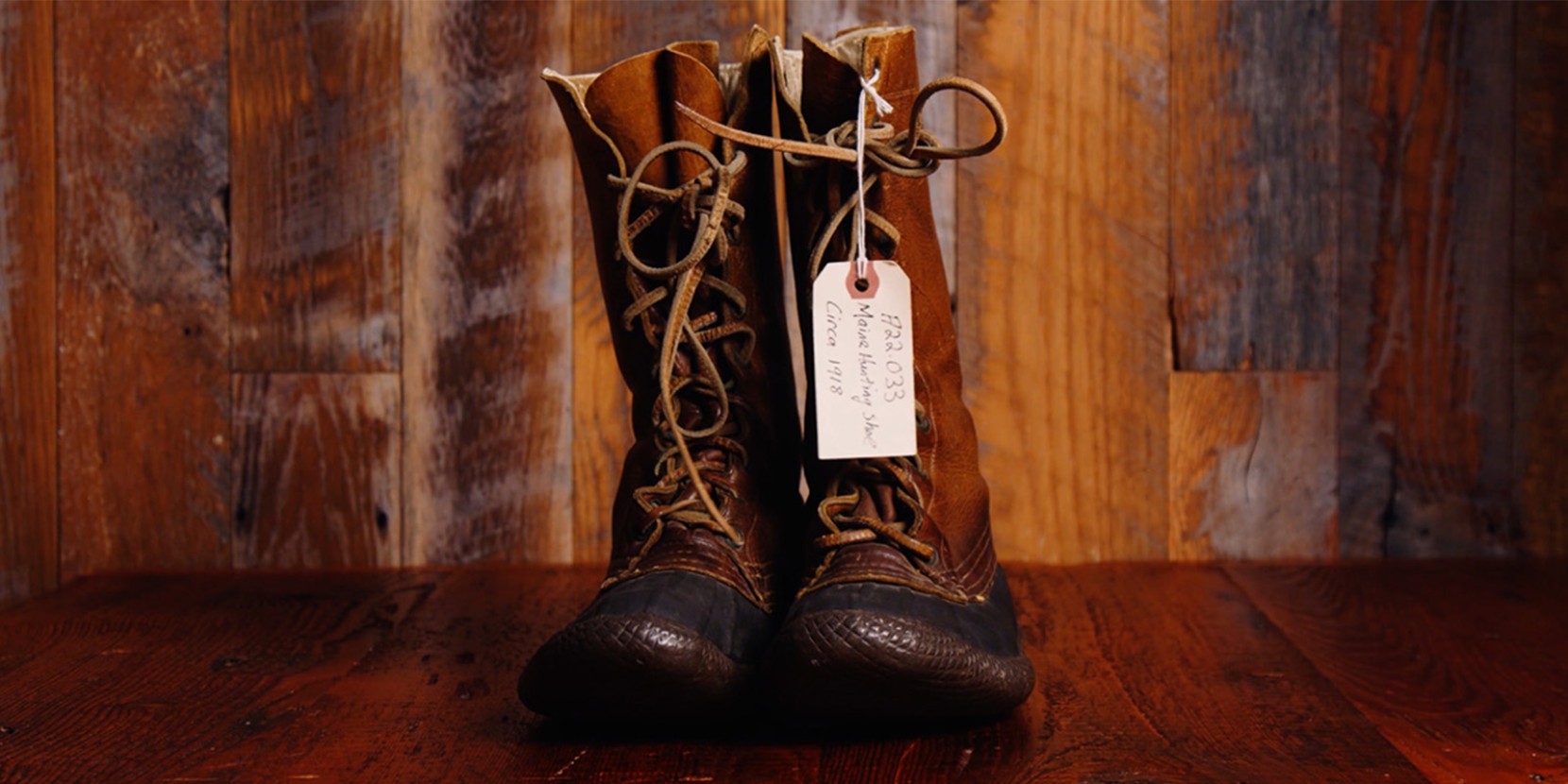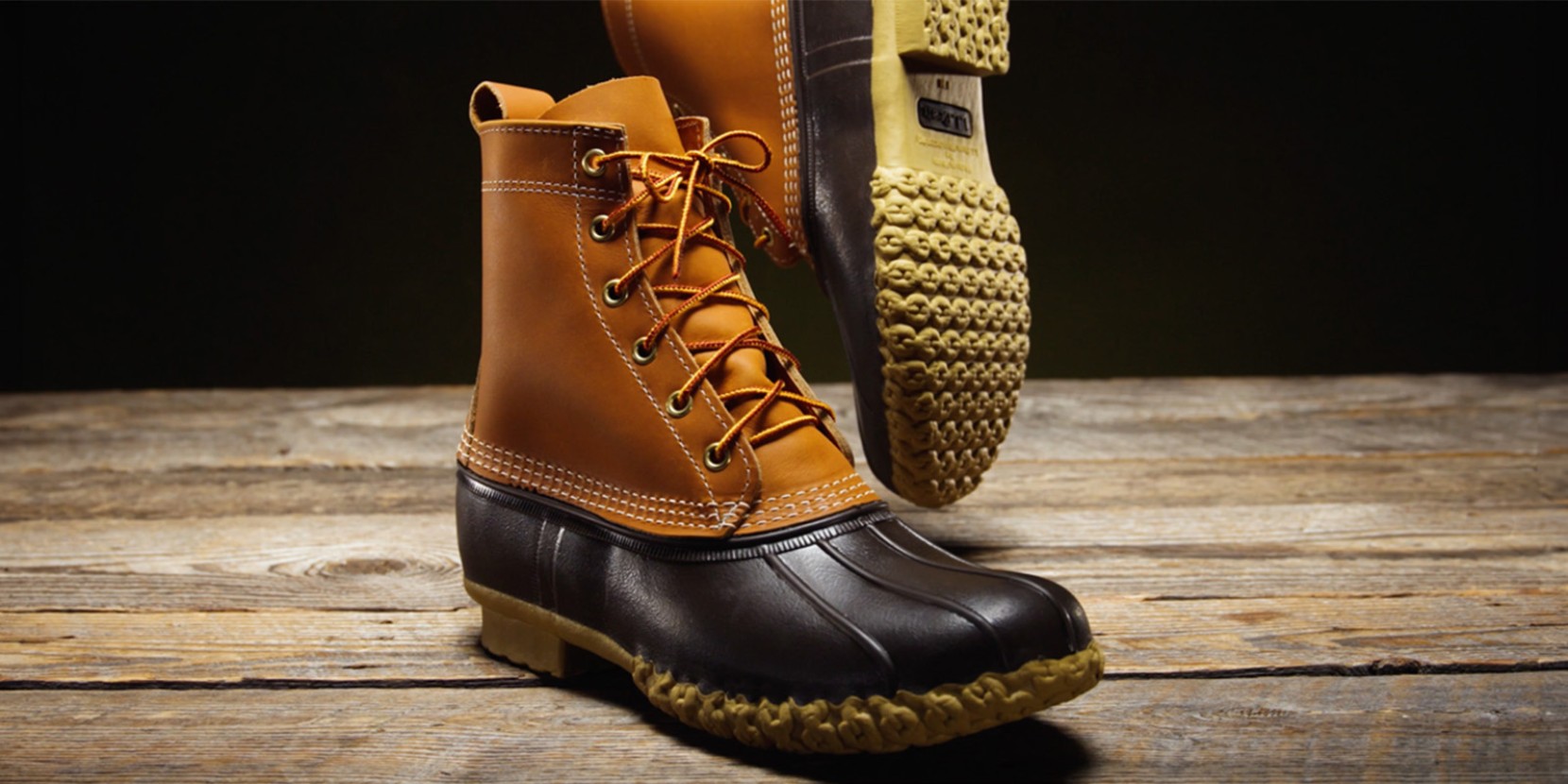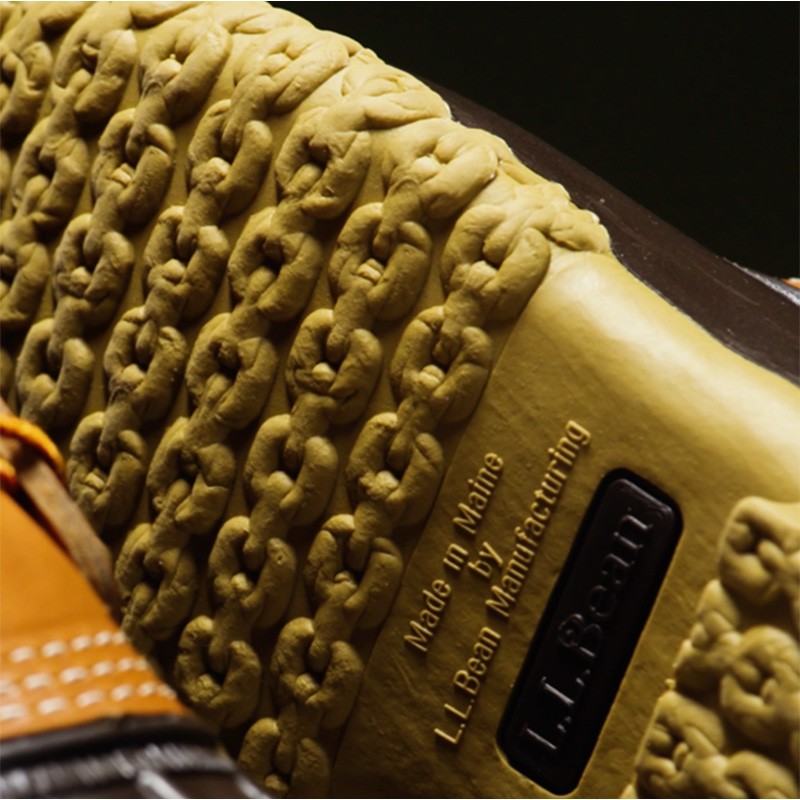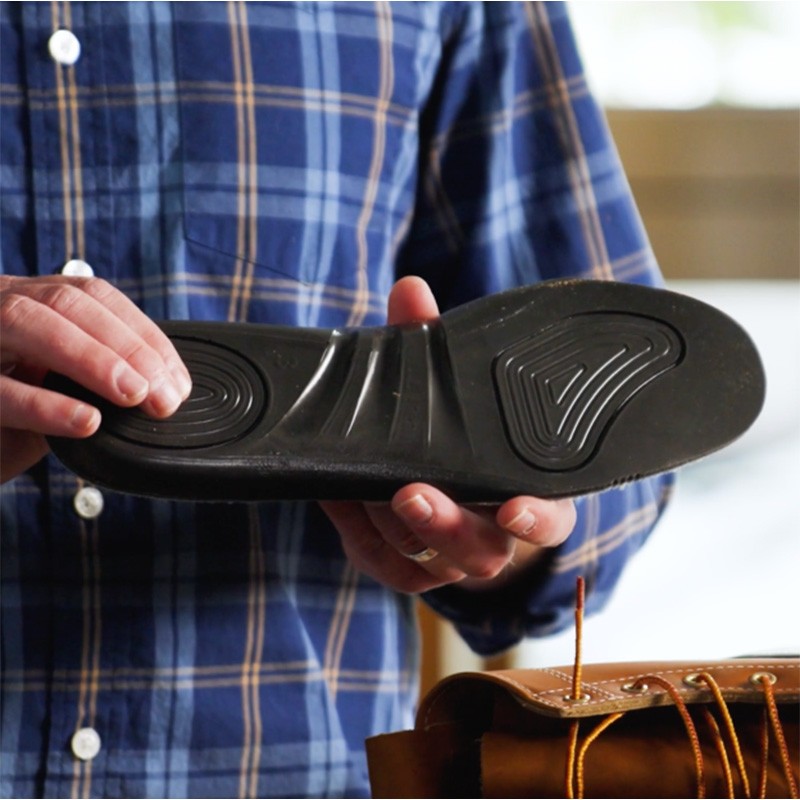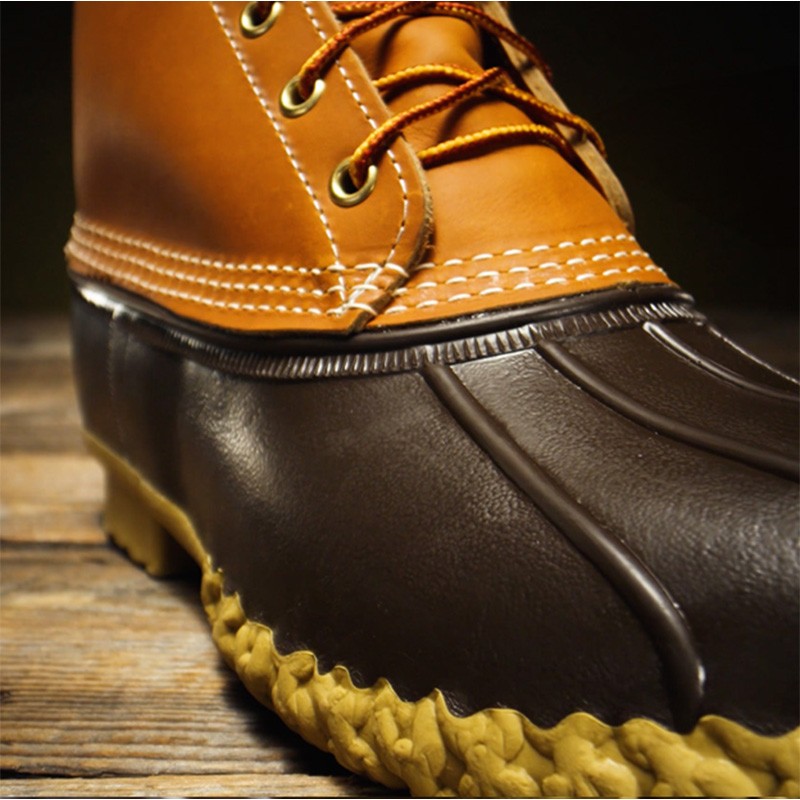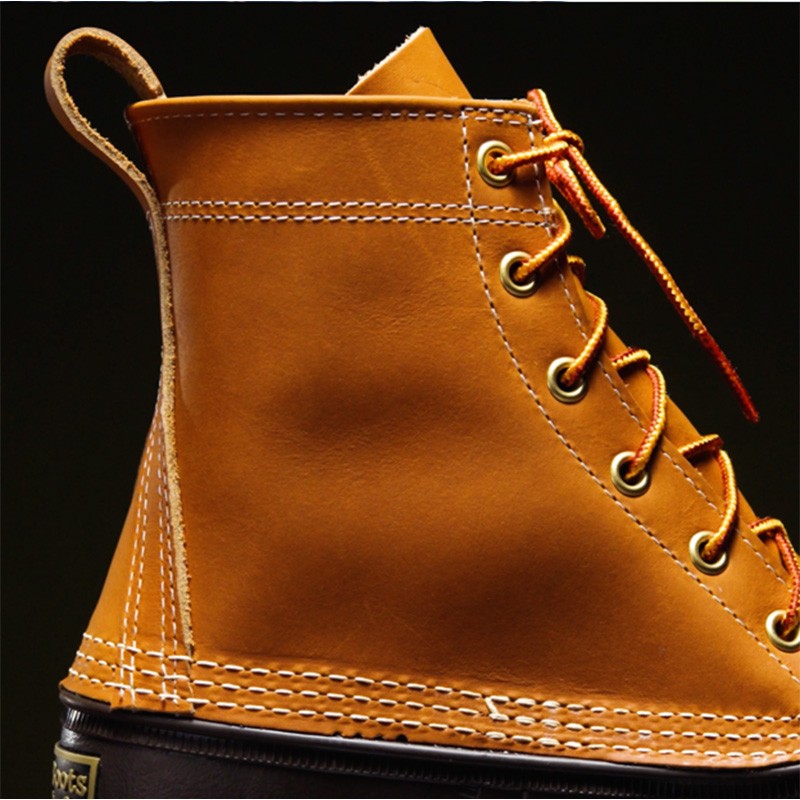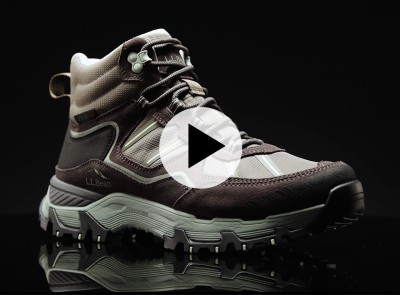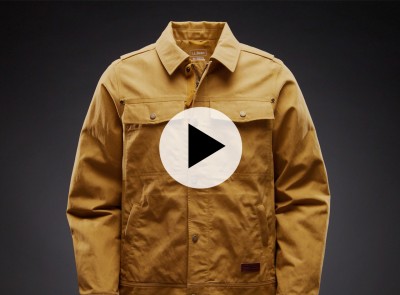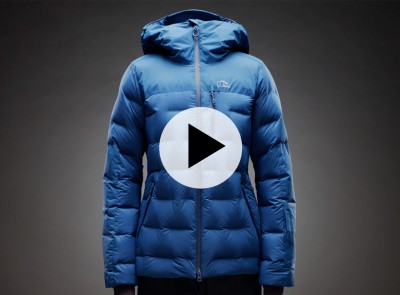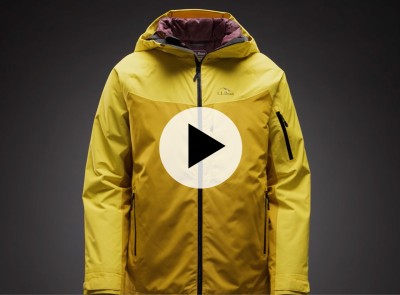(SPEECH)
[00:00:00.02] Hi, I'm Brent, product development manager at L.L.Bean. I'm here today to talk to you about our most iconic product, the Bean Boot.
[00:00:06.78] [MUSIC PLAYING]
[00:00:09.53]
[00:00:10.91] I've been at L.L.Bean for 20 years. And seven of those have been in footwear. Before we talk about all the new updates on the Bean Boot, let's talk a little bit about its history. L.L., our founder, was an avid Hunter and fisherman. And he was suffering from wet and cold feet.
[00:00:27.48] And so he wanted to develop something that could keep his feet warm and dry. These didn't exist in the market until this point. This was really unique to the customer. The first 100 pair that L.L sold, 90 of those were returned because of a faulty stitching along the seam here. There was just a one needle stitch. And so L.L. took them all back and said he would repair them. And he did. And this is where the triple needle stitch, a signature of our boot, was born.
[00:00:56.22] Some of the features of the Bean Boot, this is the chain tread. Very recognizable for our Bean Boot. This really helps with traction and durability in the heel. And we have the five bar design here on the toe, which is very unique to L.L.Bean.
[00:01:08.72] We have our V stay in the back, another unique feature of the Bean Boot. It really helps when you really want to pull that on. And then we have the triple needle stitch for durability. And then in the back, we have what we call the license plate. And this is how everybody knows you're wearing the original. The Bean Boot wouldn't be what it is today without the skilled artisans who handcraft it right here in Maine. Let's meet the people who make them.
[00:01:33.20] Hi, my name is Scott.
[00:01:34.58] Sarah.
[00:01:35.08] Robin.
[00:01:35.72] I've been making bean boots for eight years.
[00:01:37.91] 10 years.
[00:01:38.60] Eight years.
[00:01:39.50] 13 years.
[00:01:40.55] Nine years.
[00:01:41.45] 32 years.
[00:01:42.56] I am also a third generation L.L.Bean employee.
[00:01:46.07] I'm a fourth generation boot maker.
[00:01:48.83] So I started here at L.L.Bean Bean as a stitcher.
[00:01:52.42] Sample maker.
[00:01:53.30] I'm a vamper.
[00:01:54.19] My team gets the boot ready to be stitched.
[00:01:56.51] Quality assurance.
[00:01:57.61] An assembler.
[00:01:58.46] Pattern making.
[00:01:59.23] In rebuilds, fix up customer's boots.
[00:02:02.18] The famous triple stitch that the vampers do, we call it vamping here.
[00:02:05.60] You typically start on the inside of the boot. And you want to do a locking stitch right here. Typically, that's about four stitching.
[00:02:12.29] That ensures that it does not come apart.
[00:02:14.26] As far as I know, L.L.Bean is the only company that uses the three needle stitch.
[00:02:19.33] This is something pretty cool. We have some of the original US design patents for the Bean Boot. These date back to 1921. We know our customer loves the Bean Boot. But we saw through customer ratings and reviews that there was an opportunity to make it even better for our customer, just small updates that would go a long way.
[00:02:38.65] So now, let's jump into what's new with the Bean Boot. So we wanted to start with the outsole. With this redesign, we were able to find the right compound that improved the durability while still maintaining that traction that we've always had with this Bean Boot.
[00:02:52.09] The next was with the comfort. Two parts to the comfort story, improve the footbed as well as offer half sizes. The first part was the insole, the footbed. There's two layers to it. The first layer is that step-in comfort. The next part of it is the PU foam underneath. And that one just gives you that all day comfort. You'll get a little arch support.
[00:03:15.79] And the most noticeable part of this redesign is really the leather. It's supple, pliable. When you open the box on these Bean Boots, first thing you're going to smell is that leather.
[00:03:25.88] The way this leather breaks in, it's really going to become another heirloom that hopefully somebody will pass onto their kids.
[00:03:33.14] We knew with such an iconic product like the Bean Boot, we had to get it right. So we sent this out for the largest field test in the history of the company. We sent out hundreds of pairs, just to make sure that we had it right. Because if we didn't, we weren't going to do these updates. We were going to keep with the original.
[00:03:50.42] In addition to all the field testing, we have a state-of-the-art lab upstairs that we're able to do really specific tests on. For example, we do a flex test to determine the durability of the outsole and the triple needle stitching, an outsole test that we do for traction. We also do tests on the leather. We want to make sure that this stands up over time and will be with you for years to come.
[00:04:16.70] We have so many variations of the original Bean Boot. We have the shearling lined, which I love, the rubber mock, the Chelsea. We have a fleece lined. We literally have a Bean Boot for everyone, every type of style.
[00:04:29.21] So I own many pairs of L.L.Bean boots.
[00:04:32.50] Between myself and my children, at least 60.
[00:04:36.50] My go to lately is my 6-inch boot because I can step into it. I don't have to lace it or tie it.
[00:04:41.78] I like the lined ones, personally.
[00:04:43.52] When I see somebody wearing something that I've helped create and develop, it makes me feel proud. Anything that I can do to help people get outside comfortably and enjoy it, I'm all in.
[00:04:55.43] It's really an honor to make these boots. We take a lot of pride and joy in making these boots.
[00:05:01.55] I'm extremely proud to be a part of L.L.Bean as a pattern maker, helping to develop these awesome products that everyone knows and loves.
[00:05:08.06] The tradition has been around for over 100 years. And we're still going. And it probably will for a very long time. And I'm very, very proud of that.
[00:05:17.38] [MUSIC PLAYING]
[00:05:19.18]




